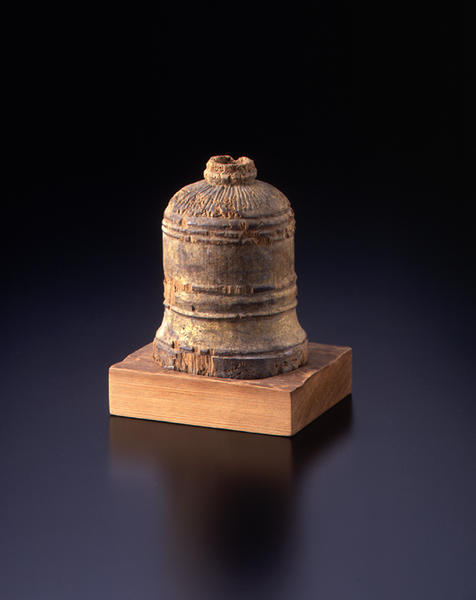鈴形香合
- 室町~江戸時代
- 14-18c
- 木製(古材)
- H-6.3 D-5 W-4.3
解説(春の玉手箱)
小さな木製の鈴で、外側には金泥が、底には全面墨が塗られている。底は浅く刳って球形の舌を彫り出し、鈴の頂上部から内側に、直径約四深さ約二・五で先が細くなっている、ほぞ穴と見られる部分があることから、上部が取れた三鈷鈴等の一部で、密教尊像の持物であった可能性がある。普通は肩の部分に見られる蓮華文が、この場合放射状の線に省略して表現されている。
現在は檜の台を浅く彫って、この鈴を蓋のように被せ、香合に転用されている。うっすらと金泥が残るこの鈴を捨てるに忍びないという、拾い上げた人の思いが伝わって来るようである。
Catalogue Entry
This small wooden bell is coated with gold paint on the exterior and its base is entirely covered with ink. The base has been thinly gouged out and a jewel‐shaped clapper has been formed. From the top of the bell to the interior carving, it is a diameter of 4 mm and a depth of approximately 2.5 cm, making the form extremely narrow. There appear to be small bore holes, and it appears that this was originally a bell which would have been taken from the top and held by a sculpture from an Esoteric Buddhist sect.
The lotus flower pattern which would normally decorate the shoulders of such a bell has here been abbreviated into an array of radiant lines.
Today this bell has been fitted with a hinoki wood base and is used as the lid of an incense container for the tea ceremony. This reuse of this lovely, pale gold bell indicates the feeling of its first owner, loathe to throw away such an unusual treasure.
